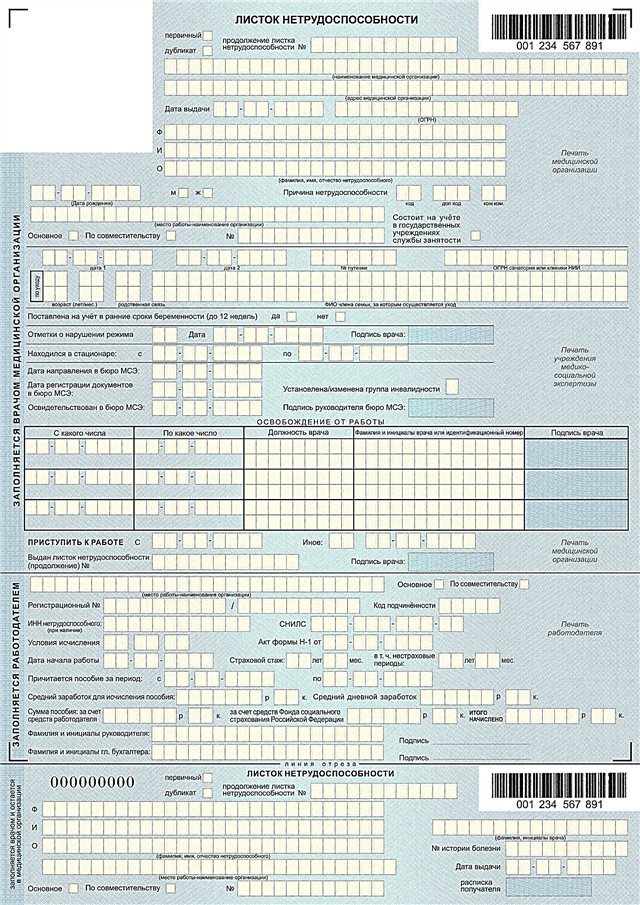Dacryocystitis in newborns is a fairly common inflammatory disease of the lacrimal sac that every young mother can face.
Why does dacryocystitis develop in children?
Dacryocystitis of newborns occurs due to a violation of the patency of the nasolacrimal canal, as a result of which microorganisms and infectious agents are not washed away by the tear, but accumulate in the lacrimal sac, causing the development of an inflammatory process.
 Among all the causes of obstruction of the nasolacrimal canal, including congenital developmental anomalies, a special place is occupied by the presence of the so-called gelatinous film at the place where the nasolacrimal canal flows into the nasal cavity.
Among all the causes of obstruction of the nasolacrimal canal, including congenital developmental anomalies, a special place is occupied by the presence of the so-called gelatinous film at the place where the nasolacrimal canal flows into the nasal cavity.
In this case, neonatal dacryocystitis can be easily cured by conservative methods, without surgical intervention, and the process does not become chronic. If the cause is a congenital defect - true atresia of the nasolacrimal canal - then surgery is performed to create a pathway for the outflow of tears.
It should be remembered that only an ophthalmologist can establish the cause, and, therefore, choose an effective treatment, and self-diagnosis and self-medication lead to consequences that threaten the health and functions of the organ.
What symptoms can help to suspect dacryocystitis in a newborn baby?
- Dacryocystitis in children usually occurs as a unilateral inflammatory process, although there are cases when both eyes are involved.
- Swelling of the lower eyelid is characteristic. If you look closely, the swelling begins to grow from the inner corner of the eye.
- If you slightly pull the lower eyelid of a newborn child, then in the area of the inner corner of the eye in the area of the lacrimal points, an accumulation of mucous or mucopurulent discharge will be determined, the content of which will increase even when the eyelid is pulled back.
- A large number of crusts can be seen on the eyelashes and at the corners of the eyes.
- Watery eyes and lacrimation from the affected eye are also key symptoms of this disease in infants.
In a newborn child, the immune system is designed in such a way that a vivid general reaction with an increase in body temperature, signs of intoxication very often occurs to any inflammatory process occurring in the body.
In this case, the diagnosis can be difficult. However, a careful examination of the child, careful observation of behavioral reactions allow us to establish the correct diagnosis.
What special research methods allow you to establish the correct diagnosis?
How is the diagnosis made?

Exists several special methods of ophthalmological examination, allowing to establish the diagnosis:
- Try, allowing to determine the patency of the nasolacrimal canal by passing a dye through it (West test). A very thinly twisted piece of cotton wool is injected into the child's nose, after which a special dye is instilled into the eye. The paint used in this study is non-toxic. The sample is evaluated after 2 minutes. If at this moment the cotton wool began to stain, then the result is considered positive. There was no dacryocystitis, the patency of the nasolacrimal canal was not impaired. In the event that the cotton wool is not stained after 10 minutes, the result is considered negative, and the diagnosis of dacryocystitis is confirmed.
- Another method to determine this disease is passive lacrimal test... The baby's lacrimal duct is washed with antibacterial or antiseptic solutions, using special blunt cannulas and local anesthetic drugs. Evaluate a method similar to the above.
- Sounding... A method that allows for both diagnosis and treatment. Endonasal retrograde sounding is done in babies from the age of 2 months. With the help of probes, it is possible to expand the nasolacrimal canal and remove the obstacle that interferes with the passage of tears. Despite the great many other methods of both research and treatment, in cases where the cause lies in a gelatinous cork, it is probing that allows you to eliminate it.
- Contrast radiography of the lacrimal duct. The use of a special contrast agent makes it possible to determine the patency of the entire lacrimal pathway, as well as to determine the level at which the "blockage" occurred. In young children, this method is used in cases where other methods turned out to be uninformative, and the treatment being carried out was ineffective, or when an ophthalmologist may suspect underdevelopment of the nasolacrimal canal.
- Endoscopic rhinoscopyconducted by otorhinolaryngologists (ENT doctors). It can also be a diagnostic method. However, this study may not be carried out in every hospital and polyclinic.
Treatment of dacryocystitis of newborns
Depending on the cause that caused the development of dacryocystitis, treatment can be conservative or operative. Conservative, more gentle treatment consists of instilling drops, performing a special massage and probing. Endonasal dacryocystorhinostomy is performed during surgery.
It should be remembered that self-medication, the use of advice and recipes of traditional medicine for this disease is not recommended, since the threat of the spread of the infectious process, up to the development of phlegmon of the lacrimal sac, is too high.
Timely consultation with an ophthalmologist will prevent chronicity of the process and, therefore, preserve the functional state of the lacrimal organs.
Drops
 Drops prescribed for dacryocystitis have an antibacterial anti-inflammatory effect. Macrolides (Tobrex) are usually used for newborns.
Drops prescribed for dacryocystitis have an antibacterial anti-inflammatory effect. Macrolides (Tobrex) are usually used for newborns.
This is explained by a lower percentage of side reactions and a fairly broad effect on bacterial agents.
Simple instillation of eye drops will not eliminate the cause, but only halt the spread of the inflammatory process.
Physiotherapy
From physiotherapeutic methods for dacryocystitis, UHF is used. However, this is also a method of symptomatic therapy.
Massage
Massage for dacryocystitis of newborns is one of the methods of treatment aimed at eliminating the cause of the disease. It is effective if the whole problem lies in the presence of a gelatinous film, the rupture of which should have occurred at the first cry of the child.
Before doing the massage yourself, consult an ophthalmologist, ask to demonstrate the technique.
How to do massage for dacryocystitis of newborns?
- Wash your hands thoroughly with soap and water.
- Tear off 3 - 4 pieces of cotton wool, roll into a ball.
- Prepare a bottle of antibacterial drops.
- Place your child on a flat surface. Better if it is a changing table.
- Drip the child's eyes.
- Blot with prepared cotton wool from the outer to the inner corner of the eye.
- Place your thumbs or, if it is convenient for you, index fingers in the area of the inner corner of the eye, carry out a series of jerky presses (at least five) from top to bottom.
Remember, your baby is lying down, so what is meant by moving from top to bottom should sound right towards the wing of the nose, as if you were expelling a tear into the nose. Correct performance can be indicated either by an increase in discharge from the eye, or by a sniffing child's nose. The force with which the impact pressure should be applied should be moderate. The structures of the nasolacrimal canal, the cartilage of the nose, and the eyelids of the baby are quite fragile, they can be easily damaged.
- Drip the eyes and blot them with clean cotton balls.
- Place the baby in the crib.
- Wash your hands.
Operative treatment
In the absence of the effect of massage and antibacterial drops, it is recommended to carry out retrograde endonasal intubation in order to flush the lacrimal canal, and then probe the lacrimal points with Bowman probes (No. 0 or No. 1) in order to flush the nasolacrimal canal.

Depending on the condition of the child and his behavior, probing can be carried out both under local anesthesia and under general anesthesia.
Endonasal retrograde intubation is performed from the age of 2 months. It is justified to carry out three-time probing until the child reaches six months. Then, if there is no effect, the lacrimal points are probed with further flushing of the nasolacrimal canal with antibacterial or antiseptic solutions using special blunt cannulas.
If the desired effect has not come or there is a congenital underdevelopment of the nasolacrimal canal, from the age of 2, the child can undergo surgical treatment - dacryocystorhinostomy, aimed at forming an outflow pathway.
Currently, the development of endoscopic research and treatment methods is becoming more common. Endoscopic dacryocystorhinostomy is a more gentle method of surgical intervention that allows you to create or restore the functional state of the lacrimal organs.
Article rating:



